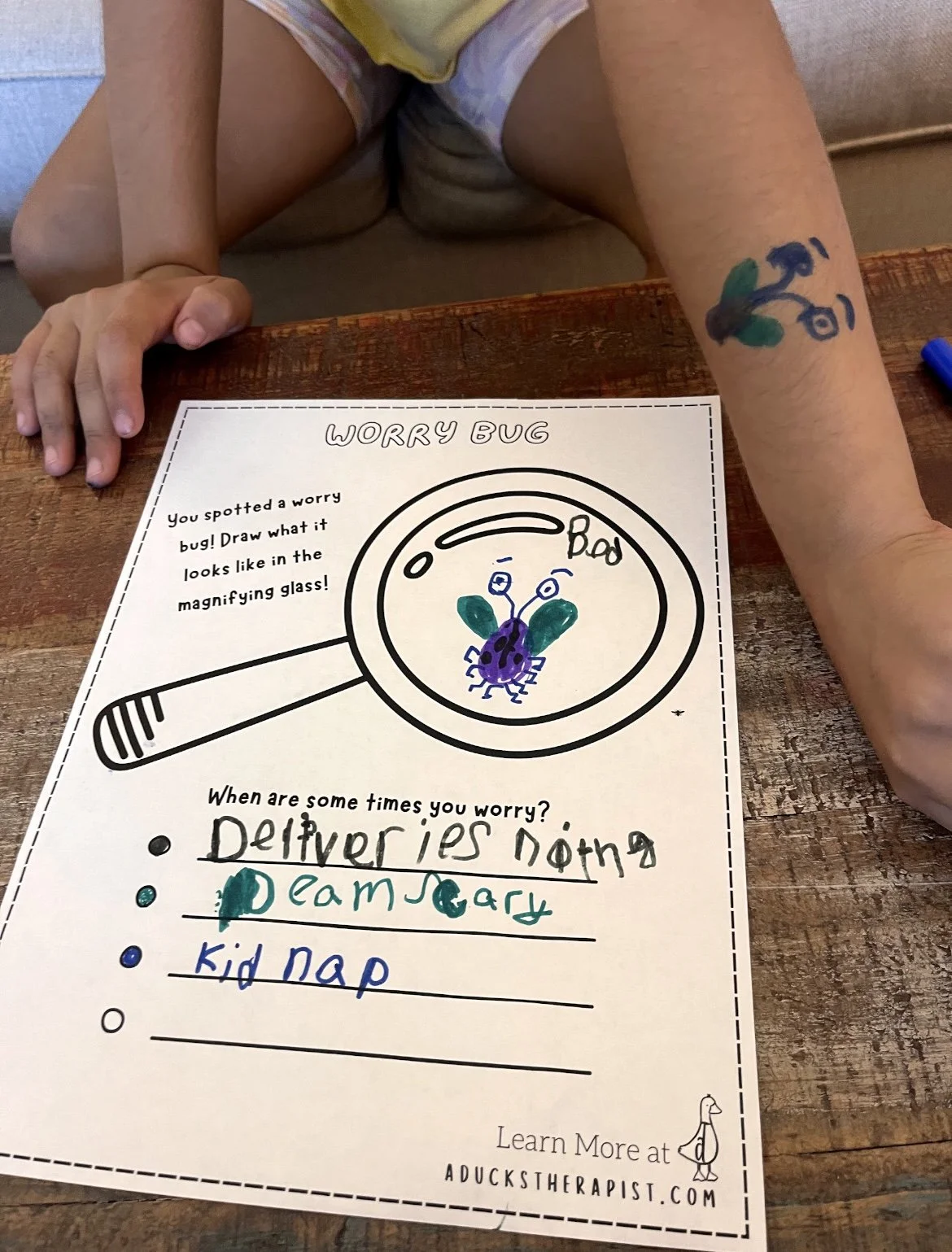Worry Bug
An anxiety externalization tool that uses the creative metaphor of examining worries under a magnifying glass. Children draw their worry as if it were a bug, then list specific times when they experience worry. This exercise helps distance children from their worries and makes anxiety feel more manageable and observable.
Additional Therapeutic Questions:
"If your worry bug could talk, what would it say to you?"
"How big does your worry bug feel? Does it change size at different times?"
"What would help make your worry bug smaller or quieter?"
"Where in your body do you feel your worry bug living?"
"If you could give your worry bug a name, what would it be?"
"What does your worry bug need from you? What do YOU need from it?"
"Is there anything your worry bug is trying to protect you from?"
Cognitive Distance: The metaphor creates psychological distance from overwhelming emotions. When anxiety is "a thing to draw" rather than an all-consuming feeling, children develop metacognitive awareness—the ability to think about their thinking—which is fundamental to emotional regulation.
Pattern Recognition: By listing specific worry times, children and therapists can identify triggers and patterns. This moves from vague "I'm always worried" to concrete, manageable data: "I worry before school, at bedtime, and when I have tests." Specificity enables targeted intervention.
Developmental Appropriateness: The visual, hands-on nature meets children at their developmental level. Abstract concepts like "anxiety" become concrete through drawing, making the invisible visible and therefore more manageable.
Assessment Value: The drawing itself provides diagnostic information—size, detail, colors, intensity all reflect the child's relationship with their anxiety. Multiple body parts might indicate somatic symptoms; dark colors or chaotic drawings might suggest severity.


